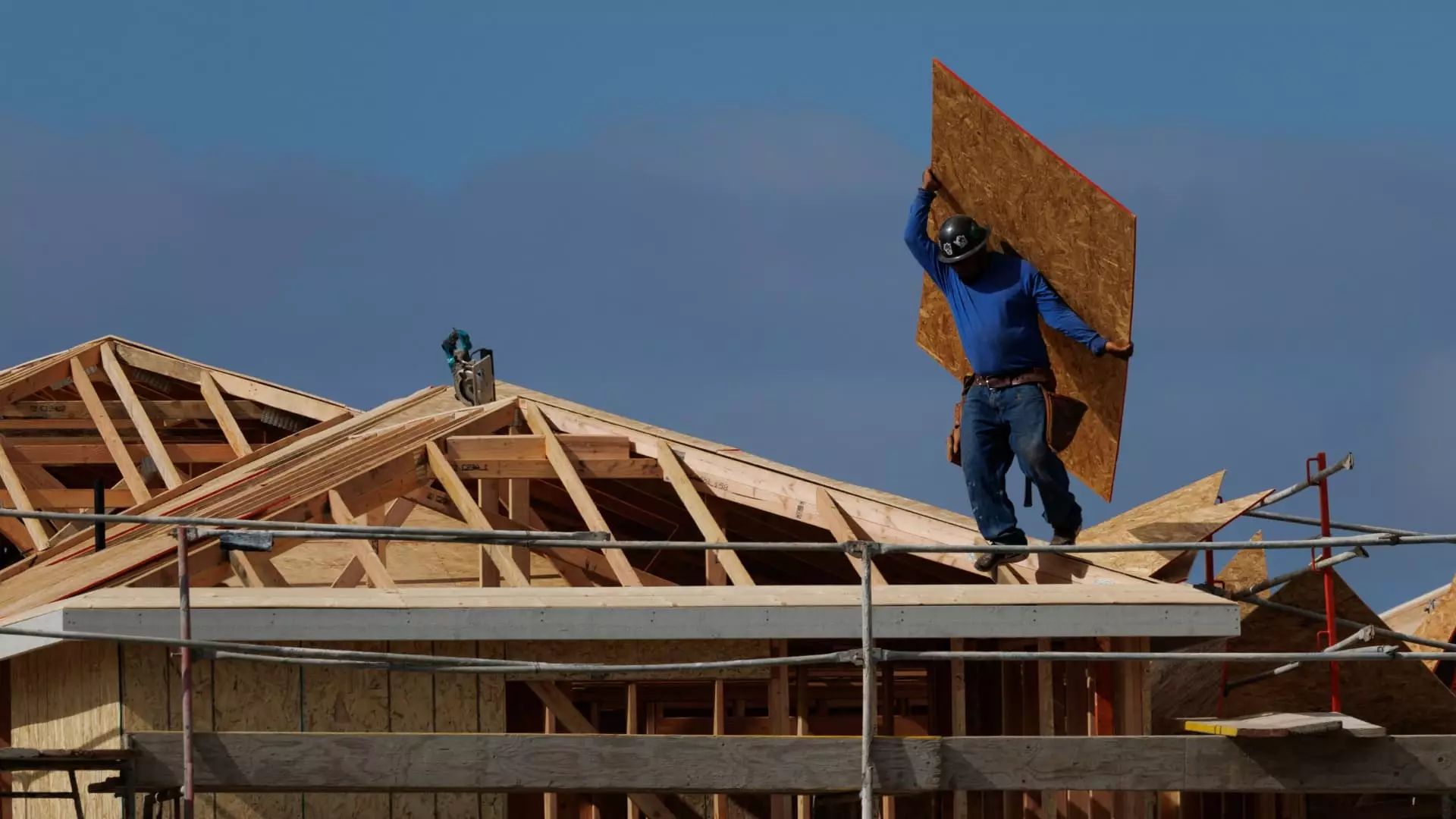Despite fleeting optimism sparked by recent legislative efforts, the reality of the housing market remains grim. A marginal uptick in builder confidence—rising just one point to 33—belies the underlying malaise threatening to undermine the entire sector. When the threshold for positive sentiment is set at 50, lingering well below that mark signals a crisis that’s unraveling with alarming speed. This isn’t a temporary lull; it’s a systemic breakdown rooted in affordability issues, elevated mortgage rates, and a stubborn reluctance from buyers to commit. The so-called recovery is little more than a fragile deception, masking a fundamental decline that will have long-lasting repercussions.
An Unprecedented Price War and Shrinking Margins
More startling still is the industry’s response to waning demand: an aggressive, record-breaking price reduction spree. Nearly 38% of homebuilders slashed prices in July—an unprecedented figure since tracking began in 2022—driving average discounts to 5%. This is not a sign of strength; it’s a desperate gambit to ignite sales amid an economic climate that is increasingly unsympathetic. Builders are resorting to rate buy-downs and outright discounts, sacrificing margins in hopes of wheedling buyers into homes they can’t comfortably afford. However, this strategy merely postpones inevitable losses, as margins tighten further and the risk of a market collapse looms larger.
Mortgage Rates: The Silent Saboteur
While lawmakers celebrated tax relief measures, the core issue remained unaddressed: mortgage rates have stubbornly stayed elevated for months. The artificially low enthusiasm prompted by policy tweaks is superficial at best. Homebuyers are paralyzed by soaring borrowing costs; prospective owners are hesitant to commit to loans that siphon away their financial security. As the affordability crisis deepens, the number of homebuyer traffic shrinks to its lowest levels since late 2022—an ominous sign that a broad swathe of Americans is being shut out of the housing market permanently. Without decisive action to lower interest rates or increase housing supply, this paralysis threatens to turn into a full-blown housing recession.
Regional Disparities and an Uneven Outlook
The geographical split reveals an even bleaker picture. While the Northeast shows some resilience with a modest rise in builder sentiment, the South and West are sinking into deeper despair. Weakening builder confidence, declining permits, and falling sales figures paint a picture of a sector on life support. Regions with more affordable markets seem more resistant, but even these pockets are vulnerable as the economic headwinds persist. This uneven landscape suggests that any recovery will be sluggish at best, uneven at worst, and likely to exacerbate regional inequalities.
The Long-Term Threats of a Market Collapse
The housing sector’s fragility isn’t just a temporary setback; it signals a potential derailment of decades of growth and stability. Single-family housing starts are projected to decline in 2025, a clear indicator that affordability woes and high interest rates have fundamentally crippled the construction pipeline. When builder traffic hits two-year lows and permits decline, there is a real danger that this downturn could snowball into a broader economic malaise. In the end, a housing market that continues to falter under these conditions risks undermining the economic health of the nation as a whole—unless meaningful, structural reforms are enacted.
Throughout this crisis, the core reality remains unchallenged: America’s housing market is in peril, tethered to a fragile foundation of inflated costs, stagnant wages, and fiscal policies that, while well-intentioned, fail to address the root causes. Without strategic intervention that prioritizes sustainable affordability and controls mortgage rates, the dream of homeownership may become an elusive, fading ideal for many Americans.

